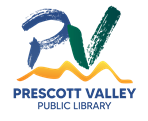Why socks disappear in the wash : and over 250 other moments of science
(Book - Regular Print)
Contributors
Published
New York : Barnes & Noble, 2005.
Physical Desc
xiii, 186 pages ; 22 cm
Status
Prescott Valley Public Library - Nonfiction Books
500 GLA
1 available
500 GLA
1 available
More Details
Published
New York : Barnes & Noble, 2005.
Format
Book - Regular Print
Language
English
Notes
General Note
"This is a one-volume edition of two books originally published separately: Why you can never get to the end of the rainbow and other moments of science, and How can you tell if a spider is dead?"--T.p. verso.
General Note
"The short essays contained in this book are adapted from the scripts for the radio series 'A Moment of Science'"--Pref.
Bibliography
Includes bibliographical references and index.
Description
Essays explore the world of science, discussing such topics as the shape of the Earth, the speed of tornado winds, and the iron content of human milk.
Description
Loading Description...
Also in this Series
Checking series information...
Copies
| Location | Call Number | Status |
|---|---|---|
| Prescott Valley Public Library - Nonfiction Books | 500 GLA | Find It Now |
Reviews from GoodReads
Loading GoodReads Reviews.
Citations
APA Citation, 7th Edition (style guide)
Glass, D. (2005). Why socks disappear in the wash: and over 250 other moments of science . Barnes & Noble.
Chicago / Turabian - Author Date Citation, 17th Edition (style guide)Glass, Don, 1939-. 2005. Why Socks Disappear in the Wash: And Over 250 Other Moments of Science. Barnes & Noble.
Chicago / Turabian - Humanities (Notes and Bibliography) Citation, 17th Edition (style guide)Glass, Don, 1939-. Why Socks Disappear in the Wash: And Over 250 Other Moments of Science Barnes & Noble, 2005.
MLA Citation, 9th Edition (style guide)Glass, Don. Why Socks Disappear in the Wash: And Over 250 Other Moments of Science Barnes & Noble, 2005.
Note! Citations contain only title, author, edition, publisher, and year published. Citations should be used as a guideline and should be double checked for accuracy. Citation formats are based on standards as of August 2021.
Staff View
Loading Staff View.

